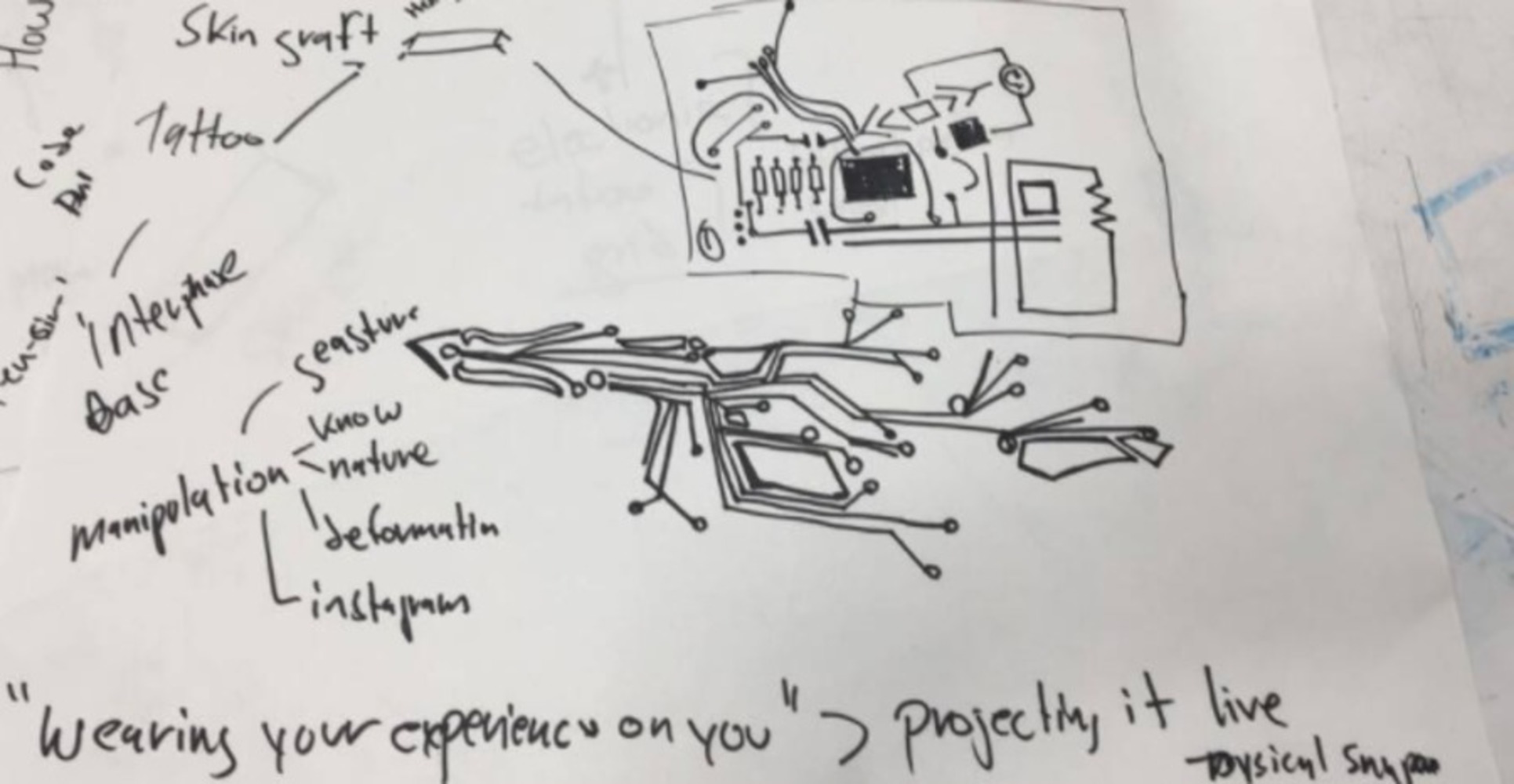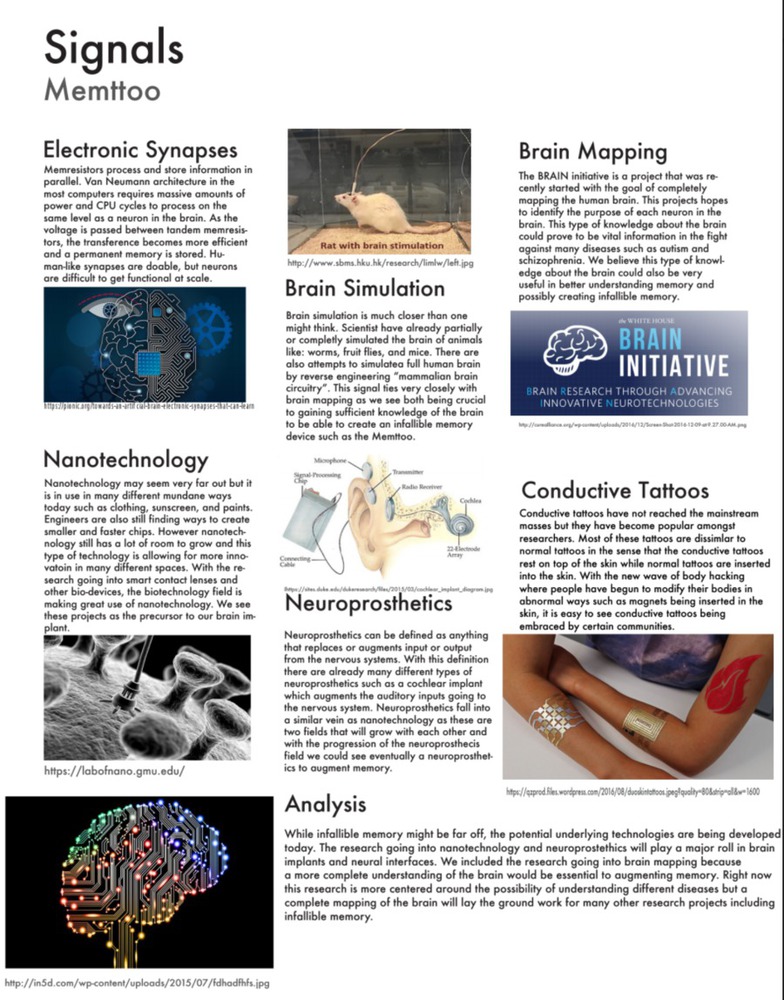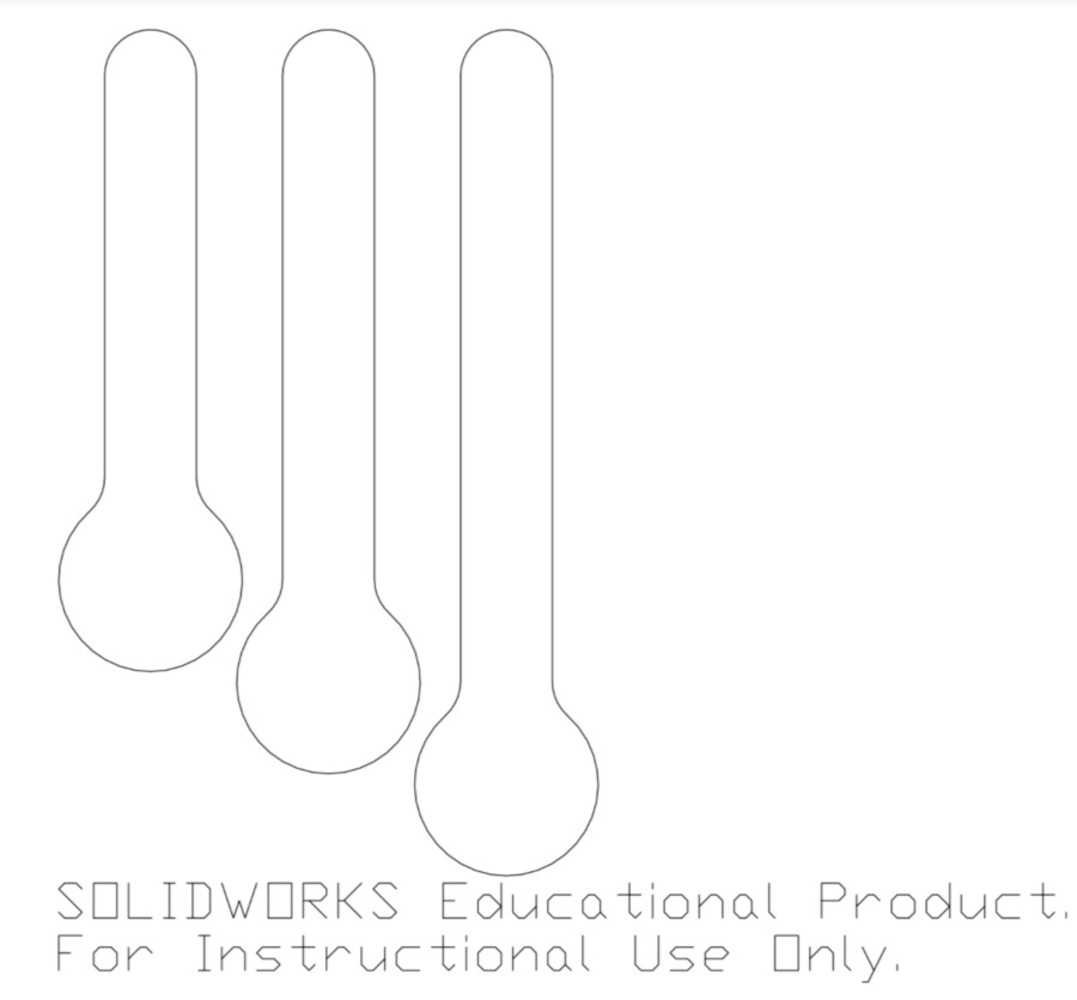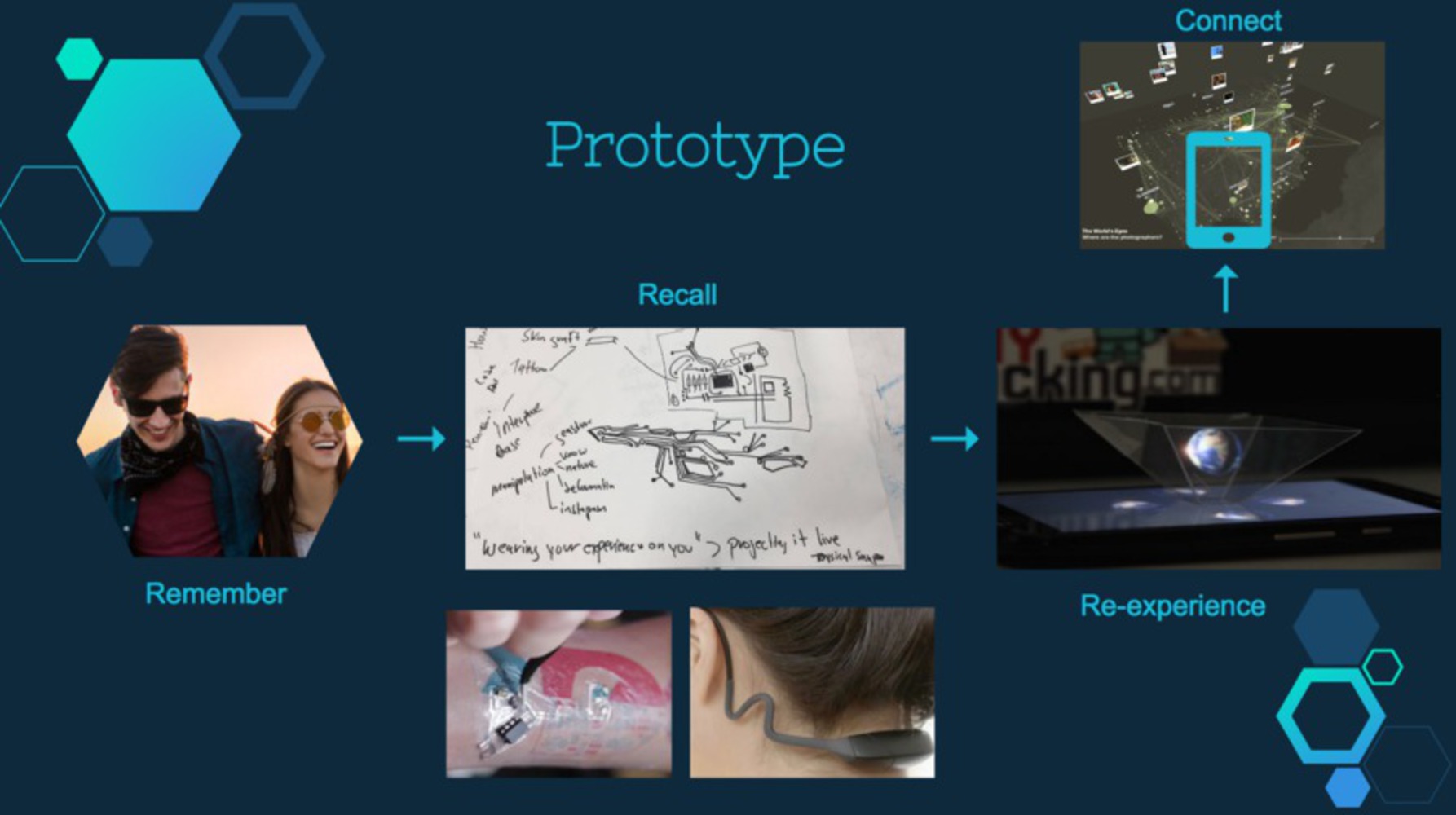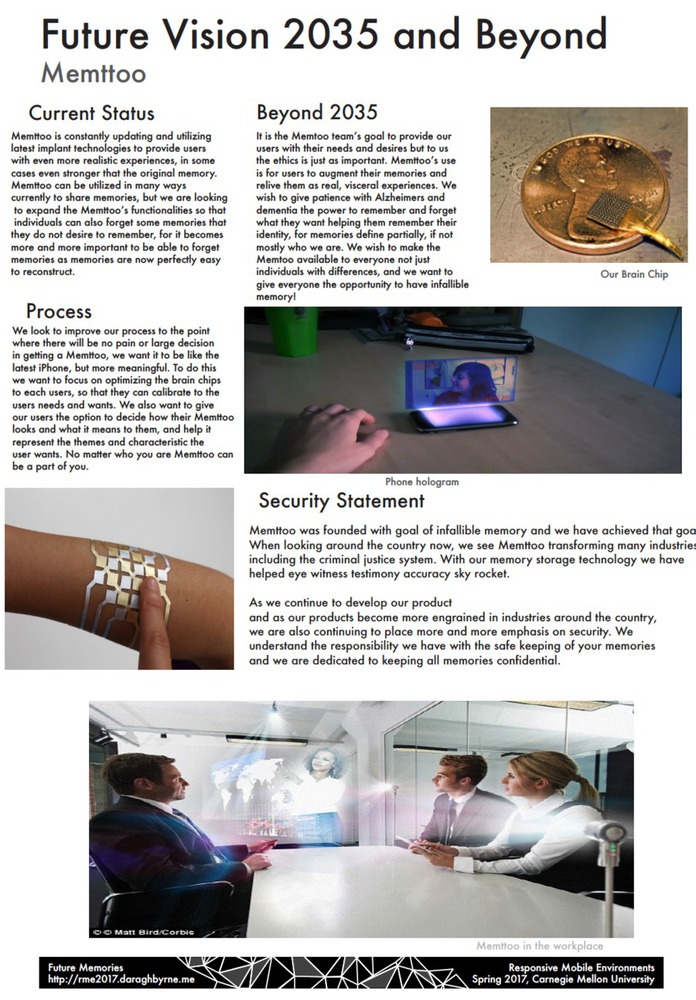Conceptual Design
When we started working on the idea behind the Memttoo we wanted to address the future of intangible memory, even though it does not exist yet, and the accessibility of people's memories. We wanted to envision what a future with perfect memory recollection and documentation would look like, and how society would change. Currently, individuals save personal photos representing moments and memories to various online platforms to share feelings and emotions with their friends, while also documenting their "online lives," and growing the amount of data they have online. These online databases save photos, which have a certain association with given memories, and no one really knows if once the photos are uploaded they disappear with time.
The future of what will happen to these large databases of personal information is still unknown, even though individuals speculate. To be able to understand how a person's conceptualization of memories will change with time, it is important to think critically about how individuals have saved and represented their memories and if they have done so tangibly or digitally. Our team wanted to find a way of integrating memories into our everyday lives, in more meaningful ways, then just posting on social media. We wanted to choose a project that would make it that memories could be easily accessed and shared, while still holding an emotional association. We wanted to augment the memory experience and make it more meaningful to the person while, looking at how infallible memory would be utilized in the future in society, for example for criminal witnesses.
